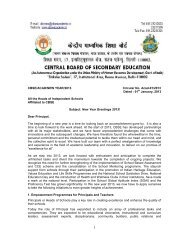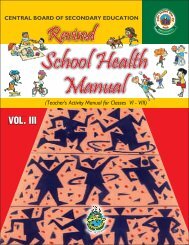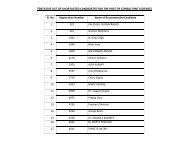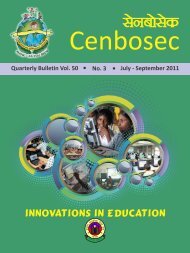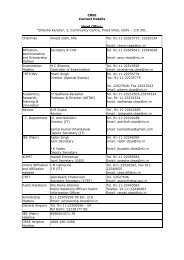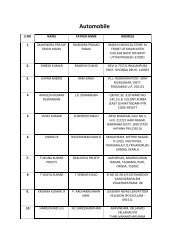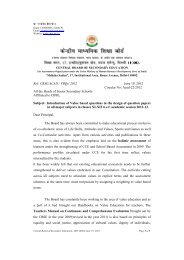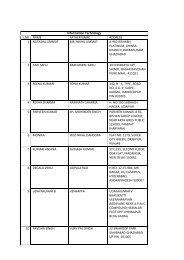CCE Manual VI - VIII - CBSE
CCE Manual VI - VIII - CBSE
CCE Manual VI - VIII - CBSE
You also want an ePaper? Increase the reach of your titles
YUMPU automatically turns print PDFs into web optimized ePapers that Google loves.
Continuous and Comprehensive Evaluation<strong>Manual</strong> for TeachersAnnexure 1Types ofAssessmenttools/techniquesAdvantagesCaution for teachersSuggestions forimplementation8. PhotographsProvidesdocumentationof a child’sexperiences,while they aredoing tasks/ work,they could also beof finishedproducts, projectmodels etc.• Provided accuraterecall of events.• Provides an insightinto children’s waysof thinking andinteracting.• Facilitates sharingof information withfamilies.• Provides an insightinto the child’semotional, socialand psychologicalaspects ofdevelopment.• The aestheticquality may not becritical.• Avoid making thechild self-consciousin front of thecamera by yourcomments orsuggestions.• The picturecomposition shouldinclude importantdetails of theexperience, processof product beingphotographed.• Choosing wherephotographs needto supplementother tools.• Using photographsto discuss withchildren aboutthemselves at alater time.9. Audio-VideoRecordingsSpecific situation orover a time span tocover importantprocesses/aspectscan be recorded,and analyzed later.• Both allow languageand the way it usedto be ‘captured’with accuracy.• Movement andsound add to theunderstanding of theevents taking place.• Helps to understandstudent’sexplanations thatindicate differentways of thinking.• Analysis is timeconsuming,• Children mayoccasionally be‘performing’ forthe camera.• Expensive as itrequires technicalexpertise forassistance.• Careful selectionsof what to recordfor subsequentanalysis isnecessary.• Giving childrentime to get familiarand feel at easewith the equipmentis a good idea.Source: NCERT, October 2008107





